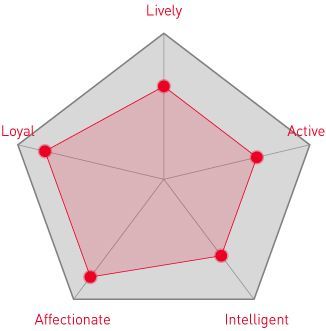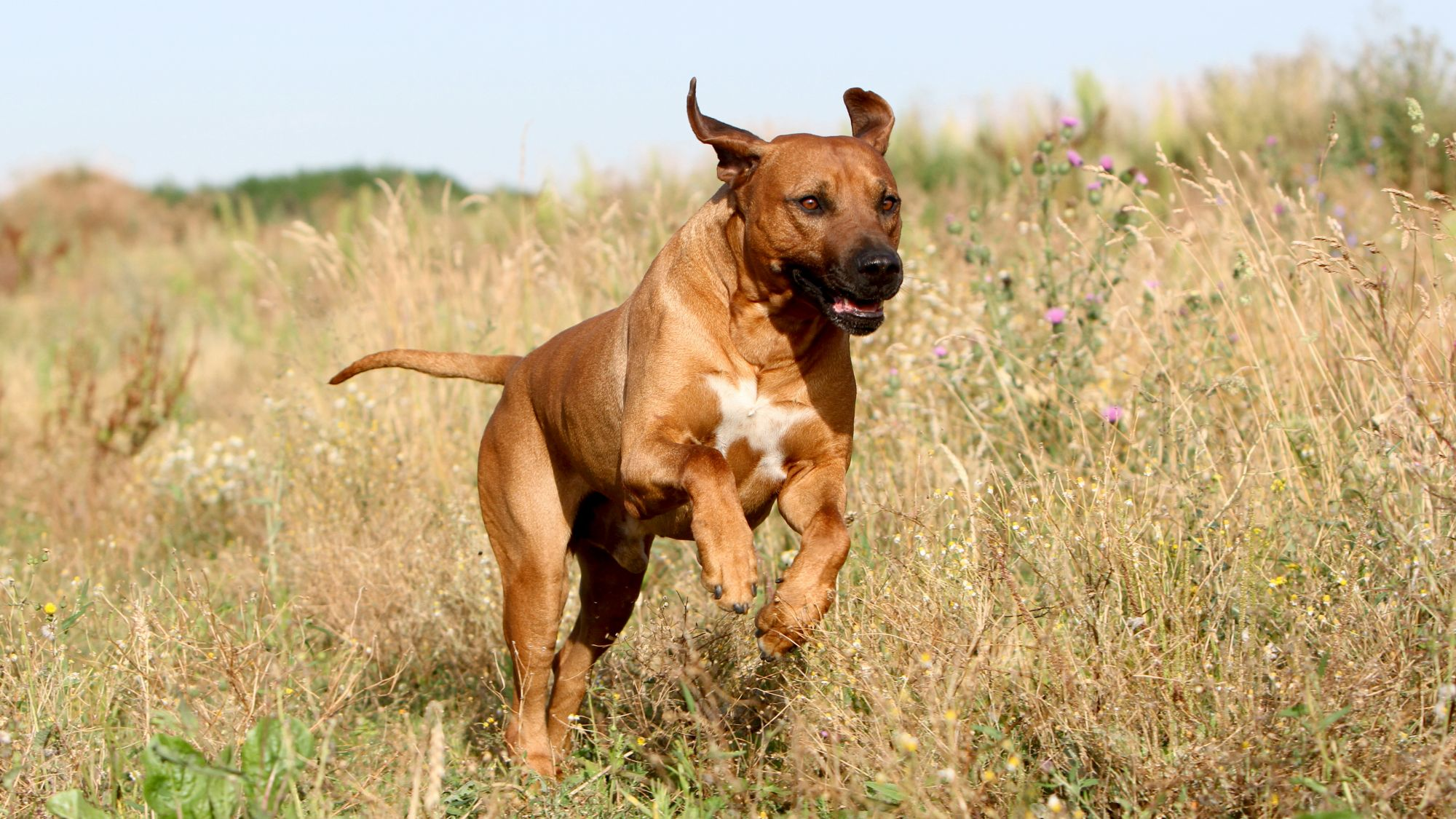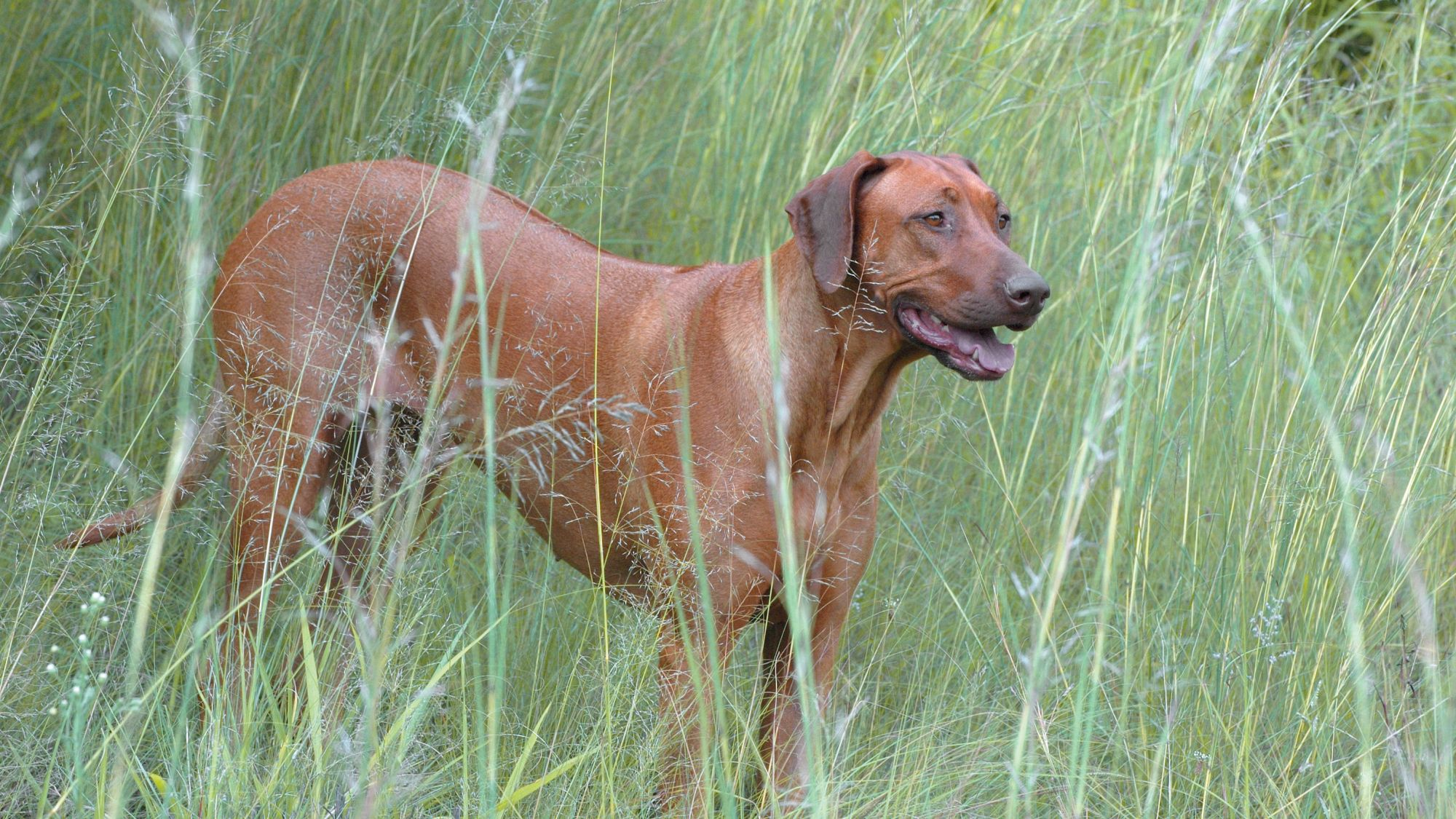
Let's talk Rhodesian Ridgebacks
The athletic and imposing Rhodesian Ridgeback gets its name from the trademark “ridge” of fur on its back. What it lacks in imaginative naming, the breed more than makes up for in handsome looks, loyalty and physical strength. The Rhodesian Ridgeback was originally bred as a hunting dog in what was then known as Rhodesia in southern Africa but nowadays makes a playful and affectionate pet for a family with enough space to welcome this large hound.Official name: Rhodesian Ridgeback
Other names: African Lion Hound
Origins: Southern Africa

| Drooling tendencies: |
|
Warm weather? | |
| Shedding level: | Suited to apartment living? | ||
| Energy level (high, low, medium) *: | Medium | Family pet?* |
 |
| Compatibility with other pets: |  |
Can stay alone?* | 
|
* We advise against leaving pets alone for long stretches. Companionship can prevent emotional distress and destructive behaviour. Speak to your veterinarian for recommendations.
Every pet is different, even within a breed; this snapshot of this breed’s specifics should be taken as an indication.
For a happy, healthy and well-behaved pet, we recommend educating and socialising your pet as well as covering their basic welfare, social and behavioural needs.
Pets should never be left unsupervised with a child.
All domestic pets are sociable and prefer company. However, they can be taught to cope with solitude from an early age. Seek the advice of your veterinarian or trainer to help you do this.


| Baby age: | Birth to 2 months |
| Puppy age: | 2 to 15 months |
| Adult age: | 15 months to 5 years |
| Mature age: | 5 to 8 years |
| Senior age: | From 8 years |

1/7
Get to know the Rhodesian Ridgeback
All you need to know about the breed
Nowadays Rhodesian Ridgebacks are prized just as much for their handsome appearance, all glossy wheaten coats and big brown eyes and their loyal and affectionate natures as they were in the old days for their courage and athleticism. But that physical strength, dating back to their southern African origins hunting lions (hence their early name of African Lion Dog) is certainly formidable: These are imposing, muscular dogs, with plenty of energy and they need regular walks as well as chances to run in safely enclosed spaces—they may not be hunting lions anymore, but their prey drive is still strong.
Once trained, Rhodesian Ridgebacks are not known to be aggressive. In fact, they are friendly and affectionate with their human families and playful and gentle with children (although of course they should never be left unsupervised and, as they’re so big, they may be intimidating to very small kids).
The Rhodesian Ridgebacks of yore were also put to use guarding remote farms so it’s no surprise that their modern-day counterparts have maintained a certain wariness of strangers. They are fiercely protective of their families and will bark to let you know if something seems amiss.

2/7
2 facts about Rhodesian Ridgebacks
1. Hollywood hound
Not content with their adventurous origins in the wilds of southern Africa, the Rhodesian Ridgeback breed has also had its brush with stardom. Among the earliest breeders of Rhodesian Ridgebacks in the United States was the movie star Errol Flynn, who raised the dogs on his Hollywood ranch in the 1930s.
2. Rhodesian Ridgeback, I presume?
One of the earliest and most famous depictions of an African ridge-backed dog appears in the Scottish missionary Dr David Livingstone’s account of his 1853 expedition, Missionary Travels in South Africa, which was published in 1857 and shows a dog with the distinctive ridge of fur along its spine running in the opposite direction to the rest of its coat—the defining feature of the Rhodesian Ridgeback.
History of the breed
While the dog we now know as the Rhodesian Ridgeback breed was developed in the late 19th century, their origins date back many centuries earlier, to crosses between European breeds including Greyhounds and Terriers, Mastiffs, Bloodhounds and Great Danes brought to southern Africa by Dutch settlers, and local breeds such as the ridged Khoikhoi dog.
The resulting combination of speed, stamina and fearlessness made the Rhodesian Ridgeback the dog of choice both for hunting and for guarding farmsteads.
As big game hunting began to wane in popularity, the survival of the Rhodesian Ridgeback breed came under threat, but a breed standard was set out in the early part of the 20th century and the breed got its name in the 1920s before being recognised by the American Kennel Club in 1955.

4/7
From head to tail
Physical characteristics of Rhodesian Ridgebacks
1. Fur
Distinctive ridge of fur the length of the spine.
2. Coat
Short, dense and glossy coat in shades of “wheaten”.
3. Body
Strong, muscular build and upright stature.

5/7
Things to look out for
From specific breed traits to a general health overview, here are some interesting facts about your Rhodesian Ridgeback

6/7
Caring for your Rhodesian Ridgeback
Grooming, training and exercise tips
That short, dense coat, in a shade known as wheaten, which runs from a pale beige to a rich reddish auburn, does not need much grooming, just a quick weekly brush and a bath from time to time should be enough. That should leave plenty of time for exercise, something Rhodesian Ridgebacks do need a fair amount of—that can come in the form of walks on the lead or chances to let off steam with a longer run. It’s important that off-the-lead runs take place in an enclosed space—even as family pets, Rhodesian Ridgebacks’ prey drive remains strong. For optimal training, start early and be patient and consistent: Rhodesian Ridgebacks have a reputation for being quite independent-minded (some might even say stubborn) but with patience you should be successful.7/7
All about Rhodesian Ridgebacks
Once trained, Rhodesian Ridgebacks are not known to be aggressive, although they do need plenty of firm, early and consistent training to put them at ease in everyday situations and ensure their naturally territorial instincts are kept in check.
Yes – once trained, playful and affectionate Rhodesian Ridgebacks get on well with children, although as for any other breed they shouldn’t be left alone with them. Thanks to their long-honed guard dog instincts, they can be territorial, barking to let their humans know when strangers are near.
translations.feature.breeds.otherbreeds
Read more on this topic

How your dog's nutrition needs change with age

How to adopt a dog

Things to consider before getting a dog
Sources
1 - Veterinary Centers of America https://vcahospitals.com/
2 - Royal Canin Dog Encyclopaedia. Ed 2010 and 2020
3 - Banfield Pet Hospital https://www.banfield.com/
4 - Royal Canin BHN Product Book
5 - American Kennel Club https://www.akc.org/



